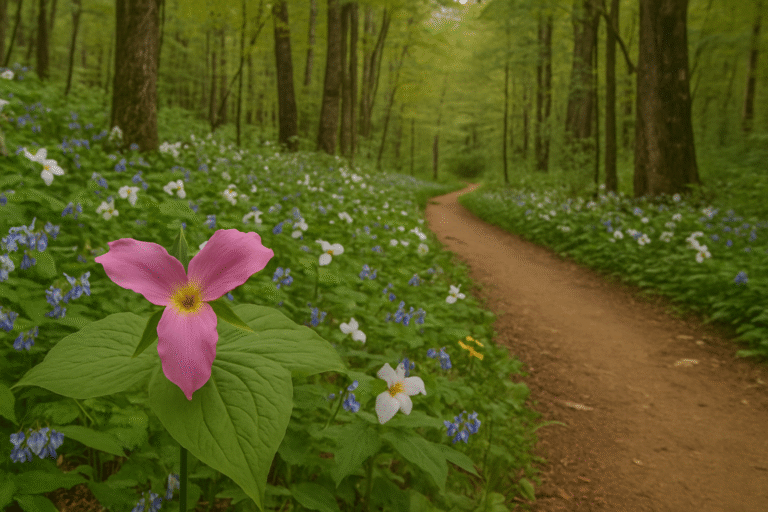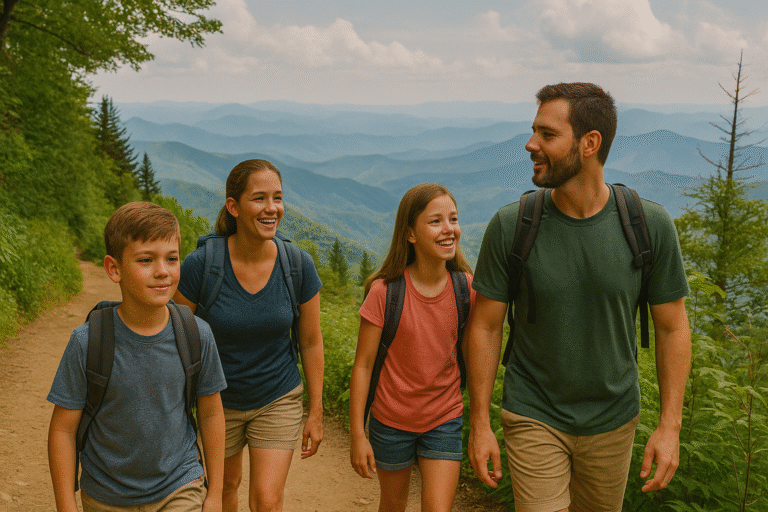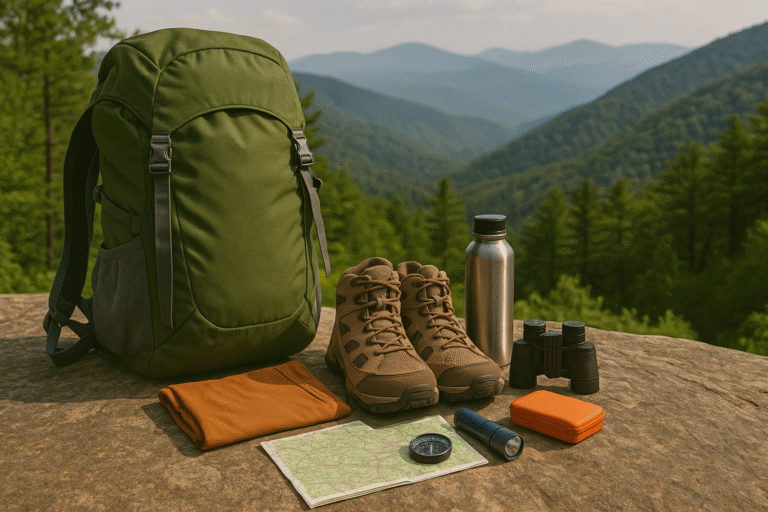
The Great Smoky Mountains are more than just scenic vistas and misty peaks—they’re alive with wildlife. From black bears and elk to deer, salamanders, and hundreds of bird species, the Smokies are one of the most biologically diverse places in North America.
Whether you’re hoping to spot a bear from a safe distance or catch a glimpse of wild turkeys strutting through a meadow, this guide will help you know where to look, what to expect, and how to stay safe while enjoying the animals of the Smokies.
What Wildlife Lives in the Smoky Mountains?
Over 65 species of mammals and hundreds of birds, reptiles, amphibians, and insects call the Smokies home. Here are some of the most iconic animals you might encounter:
- Black bears (approximately 1,500 in the park)
- White-tailed deer
- Wild turkeys
- Elk (reintroduced in 2001)
- Coyotes
- Red and gray foxes
- River otters
- Bobcats (rarely seen)
- Salamanders (more species than anywhere else on Earth!)
- Birds such as owls, hawks, woodpeckers, and warblers
Best Places to See Wildlife
1. Cades Cove
Why It’s Great: Open fields, forest edges, and old homesteads make this valley a haven for wildlife. Deer, bears, turkeys, and coyotes are frequently spotted.
When to Go: Early morning (7–10 AM) or late afternoon (5–7 PM)
Tips: Drive slowly, bring binoculars, and stop at pull-offs. Bike or walk the loop on car-free Wednesdays (seasonal).
2. Cataloochee Valley
Why It’s Great: Located on the North Carolina side, this quiet valley is home to a thriving elk population. You may also see bears, deer, and wildflowers.
When to Go: Early morning or dusk—especially in fall during elk rut season
Tips: Bring a spotting scope or zoom lens and stay quiet. Elk are most active in large meadows.
3. Roaring Fork Motor Nature Trail
Why It’s Great: The forested loop near Gatlinburg is a great place to spot bears in the trees, as well as deer and smaller mammals.
When to Go: Spring and early summer mornings
Tips: Stay in your vehicle and avoid blocking the road. Bears often climb trees.
4. Clingmans Dome Road
Why It’s Great: The high elevation offers chances to see birds like ravens and juncos, plus red squirrels and occasional bear sightings.
When to Go: Late spring to fall (road closed in winter)
Tips: Hike a short distance away from crowds for a quieter experience.
5. Oconaluftee Visitor Center & Mountain Farm Museum
Why It’s Great: This open field and historic site often hosts grazing elk in the mornings and evenings.
When to Go: Year-round, but fall is especially popular
Tips: Stay on the paved paths and use zoom lenses for photos.
Best Times of Year to See Wildlife
| Season | Wildlife Highlights |
|---|---|
| Spring | Black bear sightings, wildflowers, deer fawns |
| Summer | Salamanders, fireflies, birds nesting |
| Fall | Elk rut, turkey flocks, deer in velvet |
| Winter | Bare trees make spotting easier, otter activity increases |
Wildlife Watching Tips
- Use binoculars or a zoom lens to observe safely
- Stay quiet and patient—don’t chase or approach animals
- Look for signs: tracks, scat, scratches on trees
- Drive slowly in wildlife areas—especially in the early morning and evening
Wildlife Safety: What You Need to Know
Black Bear Safety:
- Stay at least 50 yards away from bears
- Never feed or leave food unattended
- If a bear approaches, back away slowly—don’t run
- Carry bear spray if hiking in remote areas
Elk Safety:
- Stay at least 150 feet away—especially during rut (fall) and calving season (spring)
- Use your camera zoom; never try to pet or feed
Snake Awareness:
- Most snakes in the Smokies are harmless, but two species (timber rattlesnake and copperhead) are venomous
- Stay on trails and watch where you step or sit
General Tips:
- Keep children close and teach them not to approach wildlife
- Secure all food in bear-proof containers when camping
- Report aggressive animal behavior to park rangers
Best Photography Spots
- Cades Cove in the fog (morning light + animal silhouettes)
- Elk in Cataloochee during golden hour
- Turkeys strutting in spring fields
- Owls at dusk near forested trailheads
Use a tripod and quiet shutter mode if possible. Avoid flash photography with wildlife.
Leave No Trace: Respect the Wild
Remember, you’re a guest in their home:
- Don’t feed animals or leave scraps behind
- Stay on trails and don’t trample vegetation
- Never attempt to handle or move wildlife
- Educate others and share safety tips
Final Thoughts
Seeing a bear in the wild or hearing elk bugle in a quiet valley is an unforgettable part of the Smoky Mountain experience—but it comes with responsibility. Respecting wildlife ensures that these amazing creatures continue to thrive in their natural habitat for generations to come.
So pack your binoculars, stay alert, and enjoy the untamed magic of the Smokies—just remember to keep your distance and your respect.





